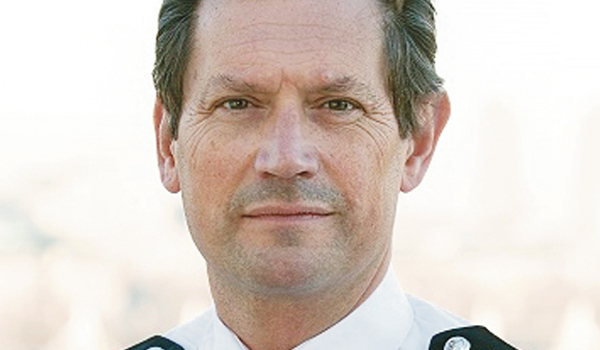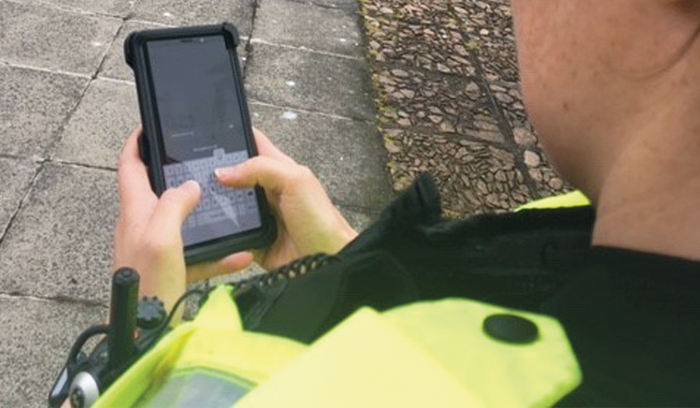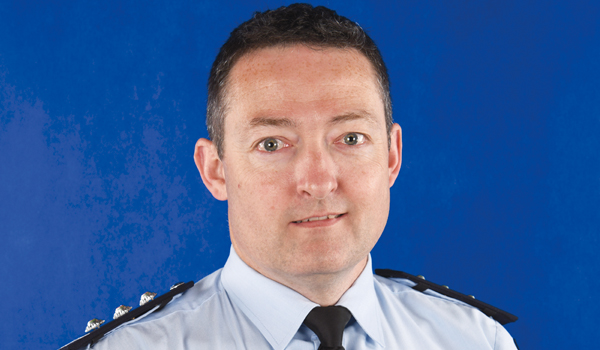Future thinking
Designed to unite innovators with decision-makers, together with the wider public sector, the Modernising Criminal Justice Conference enables the sharing of resources, ideas and expertise to aid in the modernisation that the sector so desperately needs. Police Professional reports.
The Modernising Criminal Justice Conference, taking place virtually on Wednesday June 23, will see more than 500 policy leaders, justice professionals and government officials coming together to share their insights and strategies for driving transformation in criminal justice and stopping the cycle of reoffending during these unprecedented times.
The conference will feature an insightful panel discussion exploring the new digital ambition for UK policing in the era of a pandemic. Led by Metropolitan Police Service Assistant Commissioner Nick Ephgrave QPM, Front Line Policing HQ and National Police Chiefs’ Council national lead for criminal justice, the panel will provide different perspectives and share their views on current and future challenges.
Ahead of the event, Police Professional sat down with Mr Ephgrave to discuss the easing of lockdown and emerging technologies.
How has the pandemic impacted the work of the police?
Internally our people have been working extremely hard through Covid. They have had to enforce what has been a rapidly changing and very complex set of laws, which were drafted overnight. These had to be quickly understood and implemented in force the next day.
I think they have risen to the challenge magnificently… but the outcome of that is that they are tired – they have not had their holidays, or the rest days. We have had to ask them to step up and do more and I think there is going to be a price to pay for that in terms of burnout and big chunks of leave that need to be taken. This will need to be managed – so that is both a logistical and a wellbeing challenge.
As we come out of lockdown, what are the key challenges for frontline policing?
The things that often generate typical problems or crimes have been largely absent for a year – for instance, the night-time economy and use of alcohol in public places. Vibrant city centres can present issues for us in terms of anti-social behaviour, crimes such as robberies or assaults, as well as violence against women and girls.
A key challenge for us, not just in London, but in every vibrant environment slowly coming back to life, is how do you maintain the happy situation that we have now, ie, very low levels of crime, while accommodating all of the things that people want to do? How do we continue to suppress criminality while allowing towns and cities to flourish again, particularly into the evening and around the sale of our alcohol? In London we are trying to work through this, and we are looking at innovative ways of making ourselves more visible.
With regards to violence against women and girls – not just in London but everywhere – the murder of Sarah Everard, and the reaction to it, has been profound. This has focused attention, not just on street violence generally, but on the vulnerable – particularly women and girls in public places. This is certainly another element of coming out of lockdown that we are going to be looking at.
From a city perspective, we will see the return of mass gatherings, of protest activity (which has a particular cycle), and the return of big sporting events, which presents demands upon us. We need to police the crowds; we need to police the demonstrations. As we saw with Extinction Rebellion two years ago, there are some very different challenges around the changing nature of protests and how we apply the laws from 1986, when the Public Order Act was last drafted, to the tactics and the type of protests we see now. This will continue to be a challenge after lockdown.
With schools being out of operation for so long, and with people being confined to their own homes, we are not quite sure yet what the effect will be on ‘hidden crimes’ – domestic abuse and child abuse. Child abuse particularly is often disclosed to teachers or trusted adults in an educational establishment, so the fact that children have not had access to those people means there may well be a proportion of crime that we are not yet aware of. To a certain extent the same sort of thing applies to domestic abuse as well, especially if you cannot leave your house to report it to anybody. We are monitoring this very closely.
What about the ongoing challenge of police/community relations?
The Black Lives Matter movement of last summer brought to focus the issue of police legitimacy. When you overlay those concerns with what looks like disproportionality – for example, stop and searching young black men – and you overlay that on Covid and where Covid tickets have been enforced and who has been receiving those, it has been easy for people to create a certain negative narrative, which undermines the legitimacy of policing and sees the police service as institutionally racist.
We are working very hard to explain why we have done what we have had to do, and the causes of some of this apparent disproportionality. We are also accepting that our practice does need to improve and we need to be more transparent, as well as constantly monitoring the way we interact with our communities.
What existing or future technology should we be focusing on to help modernise the UK’s police force?
I think there are lots of examples, and that it is two-fold – continuing to develop what is already there, and genuinely new innovation.
Let us start with continuing to develop parts that are already there, and let us take disclosure as a sub-topic – it is a small element of what most officers have to do, but it is a very important one, and we know that with the changes to the Directors Guidance from the Crown Prosecution Service – DG6 as it is now is – and the Attorney General’s guidelines, we are now having to do much more work earlier around disclosure in a case, and that brings challenges around managing digital data.
Therefore, we need to continue to develop, and we need companies to continue to develop software that enables us to extract and manipulate data in a swift, efficient and bespoke way. We need to avoid the ‘sledgehammer to crack a nut’ approach, which is where we are at the moment.
Then you have got the other side, perhaps the more innovative side, which is how can we understand and benefit from the opportunities that artificial intelligence (AI) presents from a crime prevention, crime detection and crime reduction perspective. The obvious AI opportunity is live facial recognition, which we trialled in the Met about a year ago. The idea is that you have a database of images of people that are of interest to the police (obviously there is a separate discussion around ensuring the legitimacy of that database) and technology that is able to scan a crowd. This enables us to be much more effective when we are trying to find somebody. It does not have to be a crime – it could be a missing persons case, it could be a vulnerable child, it could be a witness that we are looking for that has gone missing. It is a technology that is really exciting, even just from this one example of its use, however, it is also one that is very controversial.
There were all sorts of arguments at the time when we introduced it – lots of pressure groups found it worrying and considered it to be the thin end of the wedge. However, we are doing what police have always done, which is setting up an operation to see if we can spot someone – we just happen to be using technology to do that because it is quicker, more efficient, and also better at doing the job. The activity itself is not any different – but, of course, other people take different views on that. That is a really interesting example and it was fought over in the courts. There was a South Wales case that went the police’s way, and we use that as part of argument to do these trials in the Met.
Another example is retrospective facial recognition – where a crime has been committed, you have the image of the suspect that you are looking for, and then you search the internet for historical images, from any source really, to see if you can identify that person. Once you have a face of a suspect, perhaps from a CCTV image, but you do not know who it is, you can then retrospectively take that image and search it against images from all over the world – millions and millions of images. Hopefully you would be a little more focused than that if you could. However, the idea is that it would tell you who that person might be.
There are some other very exciting developments around AI. Offender management is another classic example – the idea of tagging is not new, but what could new technology deliver in terms of tagging to make it more efficient, more effective, and less onerous on the person that has got the tag? For example, is there something we can do that is more discreet, so it is less embarrassing? How can we geofence areas so that if an offender goes into a certain area an alarm is raised? This could be used for a prolific burglar who is banned from going into a certain part of town, or for a domestic abuse offender who is not supposed to go within 500 yards of the victim. There are endless opportunities to use it to prevent crime, or to detect crime. That is where the excitement lies.
However, this will face challenges from civil libertarians and people that will talk about rights to privacy – and there is nothing wrong with that as those challenges need to be made, and we as a society need to decide. It is not just for policing. I think most people would recognise the benefits that I have laid out.
Have these new technologies been well-received internally?
When I was the chief of Surrey we were quite technologically advanced – we issued every officer with a mobile phone for work use and enabled it to access the force systems. Officers took to them like ducks to water. We did not really need laptops anymore; just the mobiles and a few desktop computers in the police station. But most people worked predominantly off their phones. It transformed the way they operated and was one of the best bits of kit we ever introduced. If practitioners will fight you to keep the technology you have introduced then you know you are onto a good thing!
I think even people like me that were brought up pre-the digital revolution are adapting well, especially over the last year. For example, I never thought I would use Microsoft Teams, but of course, when the pandemic arrived we had to use it – I became proficient within about ten minutes and now I cannot imagine a future without it. It has enabled me to be more mobile, and in turn that has made me feel better and improved my wellbeing and mental wellness.
Looking to the future, what do you think police technology will look like 20 years from now?
I think we will see the ability for officers to be truly mobile – to do everything from their mobile device without having to come into a building. There are two benefits to that. First, the increased visibility – you are not having to disappear to go and write reports; and secondly, it might change the need for large estates and buildings, which, of course, are very expensive to run. There is lots of opportunity around mobility, visibility, and being able to work remotely.
I think the demographic of London will look very different in terms of residents versus commuters. I believe people will find even better ways of working remotely, which will free-up our offices even more. I also think things like instantaneous identification through DNA or fingerprints on the street will transform the need for arrest. For example, I could stop a suspect, ask them to put their finger on a device, and know there and then whether to arrest them or not. We are nearly there with fingerprints, but from a DNA perspective it would just take a minute to trace from your dead skin cells on your finger.
Do you think that will have an impact on the type of crimes that you see being committed?
I think the nature of acquisitive crime will change, and data crimes will continue to increase. We see this with phishing attacks and identity fraud, and I think people that are criminally minded, who want to make money, are increasingly realising that robbing banks is not the way to do it.
People are increasingly looking at how they can steal from the safety of their own homes, through the use of multiple identities, and the dark web – that is a growth area. I do not think we have even scratched the surface. We do work in that area, we do have officers who are experts in dark web, and we have undercover deployments, but I do not think we are anywhere near understanding the true extent of it and the true cost of it.
Then you have crimes of passion, which are motivated by lust, revenge and anger. These have a physical outlet, generally – so while you do have stalking, harassment and to some extent sexual assault via technology, there is still going to be a physical contact and combat element to these. Therefore, this will remain a challenge for us.
Police Professional readers can receive a 60 per cent discount on the cost of their conference tickets using code: POLPROF99. You can view the full agenda and book at www.modernising-justice.co.uk






